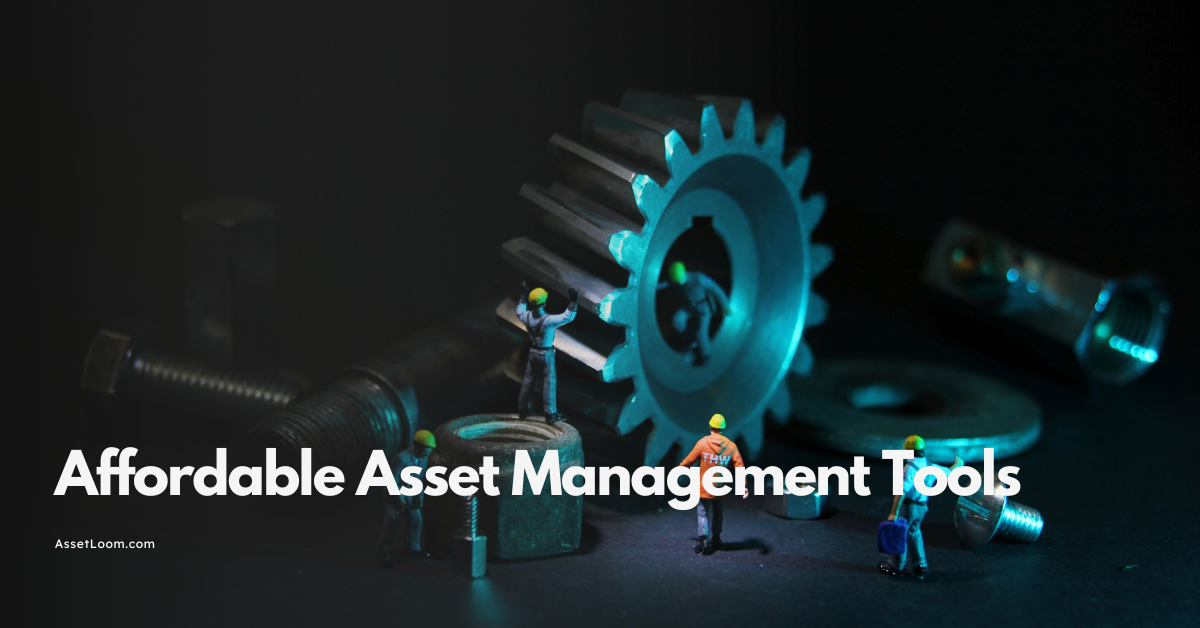The Role of IoT in IT Asset Management by 2025
IoT-driven changes will not only improve the efficiency of your IT department but will also help reduce costs, improve decision-making, and enhance security, all of which will contribute to the long-term success of your business
The role of IoT in IT asset management is rapidly evolving, and by 2025, it will be a cornerstone of how IT teams track, maintain, and optimize their assets. IoT is already helping organizations improve efficiency, reduce downtime, and automate asset monitoring in real-time.
For IT managers, system administrators, and network engineers, this shift presents both opportunities and challenges. Real-time data, predictive maintenance, and automation are transforming day-to-day operations, but new concerns like security and system integration must also be considered.
In this post, we'll explore how IoT is reshaping IT asset management, the key trends to watch for by 2025, and what these changes mean for your business. Whether you're just beginning to explore IoT or already adopting it, understanding its impact is key to staying ahead.
What Is IoT and Why Does It Matter in IT Asset Management?
The Internet of Things (IoT) refers to the network of physical devices that communicate with each other and exchange data through the internet. In simple terms, it’s about connecting everyday objects, such as sensors, computers, and machines, to gather, share, and analyze data, often without direct human intervention.
In the context of IT Asset Management, IoT provides real-time monitoring and tracking of devices such as servers, workstations, routers, and laptops. This real-time data gives IT teams unprecedented visibility into the condition, location, and performance of their assets.
Here’s why this matters:
- Real-Time Tracking: Instead of relying on outdated spreadsheets or manual audits, IoT ensures that assets are continuously tracked. IT teams get immediate updates on asset locations and status, allowing for quicker responses and more accurate planning.
- Automated Monitoring: IoT devices can monitor the health and usage of IT equipment, flagging any issues before they become major problems. This reduces the chances of downtime caused by unexpected failures, helping to maintain smooth operations.
- Improved Lifecycle Management: IoT helps track assets throughout their lifecycle, from procurement to disposal. This ensures optimal utilization, timely upgrades, and more efficient resource allocation.
In short, IoT is not just enhancing the way IT departments manage their assets. It’s transforming the entire approach to asset management, making it more efficient, proactive, and data-driven.
Challenges IoT Solves in Traditional IT Asset Management
Managing IT assets the traditional way can feel like a never-ending cycle of manual tracking, outdated spreadsheets, and last-minute audits. These methods often lead to mistakes, inefficiencies, and costly downtime. Let’s take a closer look at some of the most common pain points that IoT can help solve:
- Manual Tracking and Errors: Relying on spreadsheets or paper logs to track assets is not only time-consuming but also leaves room for errors. IT teams often spend hours searching for the right information, and sometimes, important details are missed altogether. This creates confusion and delays when decisions need to be made quickly.
- Lack of Real-Time Visibility: Without real-time insights into asset status, IT departments are essentially working with blind spots. This means teams don’t know about potential problems with their devices until it’s too late, leading to rushed fixes and costly repairs.
- Inefficient Maintenance and Unexpected Downtime: With traditional systems, maintenance is often reactive rather than proactive. Teams can’t predict when an asset will fail until it actually happens. This can lead to unplanned downtime, which disrupts business operations and increases repair costs.
So, How Does IoT Fix This?
- Automated Tracking: Instead of manual logs, IoT keeps track of your assets automatically. You’ll know exactly where everything is in real-time, with no more searching through spreadsheets or guessing where something might be. It’s all tracked and updated for you, making the whole process smoother and more accurate.
- Instant Data Access: IoT provides live updates on asset health, usage, and location. No more waiting for audits or worrying about missing data; everything you need to know is right at your fingertips, whenever you need it. This means you can make decisions based on up-to-date, accurate information, not on what you think might be happening.
- Predictive Maintenance: One of the coolest things IoT does is predict potential issues before they even happen. Sensors monitor asset health and alert IT teams when maintenance is needed. This allows for better planning, so maintenance can be scheduled at convenient times; minimizing downtime and avoiding expensive last-minute repairs.
In short, IoT makes IT asset management less about reacting to problems and more about preventing them. It’s a game-changer for efficiency, accuracy, and cost savings.
The Key IoT Trends for IT Asset Management by 2025
As we look toward 2025, IoT’s role in IT asset management will only become more crucial. Several trends are emerging that will redefine how IT departments manage their assets. These trends will help streamline operations, improve security, and enhance decision-making. Let’s break down these trends, step by step, with practical examples to show exactly how they’ll impact your IT asset management strategy.
1. AI and Machine Learning Integration
The future of IoT in IT asset management lies in artificial intelligence (AI) and machine learning (ML). By 2025, AI and ML will become the backbone of predictive maintenance. These technologies will take the data gathered by IoT devices and use it to drive smarter decisions. Rather than simply monitoring asset performance, AI and ML will analyze patterns in the data to predict future issues and optimize asset management processes.
IoT devices are already collecting vast amounts of data about your IT assets. However, simply tracking that data isn't enough. With AI and ML, the system can now make sense of all that data and provide actionable insights. For example, an AI algorithm can analyze how frequently a server experiences high usage and predict when it’s likely to need maintenance, reducing the chances of unexpected downtime.
For instance, a machine learning model could predict that a specific model of laptops is more likely to fail within 3 months due to usage patterns identified from thousands of similar devices. This kind of proactive insight allows IT teams to replace or repair devices before they cause significant disruptions.
2. Edge Computing for Faster, Localized Processing
As the number of connected devices grows, there’s an increasing need to process data quickly and locally, without waiting for it to be sent to distant cloud servers. This is where edge computing comes into play. Edge computing allows IoT devices to process data at the source on-site, near the asset itself before sending it to the cloud for further analysis.
In IT asset management, speed is crucial. IoT sensors in remote offices or branches don’t always have the luxury of high-speed connections to centralized cloud systems. Edge computing enables local devices to analyze data and make decisions right away, which is particularly important for critical infrastructure.
For example, in an enterprise with several remote data centers, IoT sensors could monitor temperature and humidity in real-time. If there’s a sudden temperature spike in one of the remote data centers, the IoT device can immediately activate cooling systems locally, without waiting for instructions from a centralized server.
3. 5G Connectivity: Unlocking Real-Time Asset Management
With the rollout of 5G networks, IoT devices will be able to communicate faster and more reliably than ever before. 5G connectivity will bring about a leap forward in real-time asset tracking, data transmission, and the ability to handle large-scale IoT systems across multiple locations.
One of the primary challenges with IoT is ensuring that devices can transmit data reliably and at scale. 5G addresses this by offering ultra-fast data speeds, lower latency, and higher device density. This means that IoT devices won’t just transmit data faster. They’ll do so in real time, without lag or interruptions, even when dealing with a large number of connected devices.
For example, in a large organization with hundreds or thousands of assets spread across different locations, IoT sensors will continuously communicate with central systems, providing up-to-the-minute status updates on everything from server health to device location.
4. Increased Focus on Security
As IoT devices become more prevalent in IT asset management, security will become even more critical. By 2025, IoT networks will feature more robust security measures, addressing the vulnerabilities associated with connecting so many devices to the internet.
Every new IoT device adds another point of potential vulnerability to your network. As IoT expands in asset management, the risk of unauthorized access, data breaches, and cyberattacks increases. Securing this network of devices is paramount to maintaining the integrity of asset data and business operations.
By 2025, IoT devices will come with built-in advanced security features, such as better encryption, multi-layered authentication, and real-time threat detection. IT teams will be able to monitor not just the assets themselves but also the security of the IoT systems connected to them.
These trends in IoT will redefine how IT asset management is done, making it more proactive, secure, and data-driven. By 2025, AI and machine learning will enable smarter decision-making, edge computing will provide faster data processing, 5G will unlock real-time communication, and security measures will evolve to protect your growing network of connected devices. These advancements will not only save time and resources but will also provide IT teams with better control over their assets, leading to a more efficient, secure, and streamlined IT environment.
What Does This Mean for Your Business?
As IoT continues to evolve, the impact on your business will be profound. The trends we’ve discussed AI, edge computing, 5G, and improved security, will not only change the way IT teams manage assets but will also bring significant business benefits. Here’s how IoT will affect your organization’s operations and bottom line:
- Improved Operational Efficiency: Automation of asset tracking and maintenance reduces manual work, allowing your team to focus on more important tasks.
- Cost Savings: Predictive maintenance reduces downtime and prevents expensive repairs by addressing issues before they occur.
- Data-Driven Decisions: Real-time insights into asset performance enable smarter decisions about upgrades and replacements.
- Stronger Security: Enhanced security features protect your IoT devices and asset data from cyber threats.
- Regulatory Compliance: IoT helps ensure compliance by automatically tracking and reporting on asset conditions and usage.
By 2025, these IoT-driven changes will not only improve the efficiency of your IT department but will also help reduce costs, improve decision-making, and enhance security, all of which will contribute to the long-term success of your business. And you can discover these IT Asset Management Trend 2025 to prepare for.
Conclusion
IoT is transforming IT asset management in ways that will be critical for businesses by 2025. From predictive maintenance and real-time tracking to enhanced security and streamlined decision-making, IoT will help IT teams become more efficient, proactive, and data-driven.
As businesses continue to embrace these technologies, the benefits will be clear: reduced costs, improved operations, and better control over assets. Staying ahead of these trends and adopting IoT solutions early will position your organization for success in an increasingly connected world.

Subscribe for Expert Tips and Updates
Receive the latest news from AssetLoom. right in your inbox


